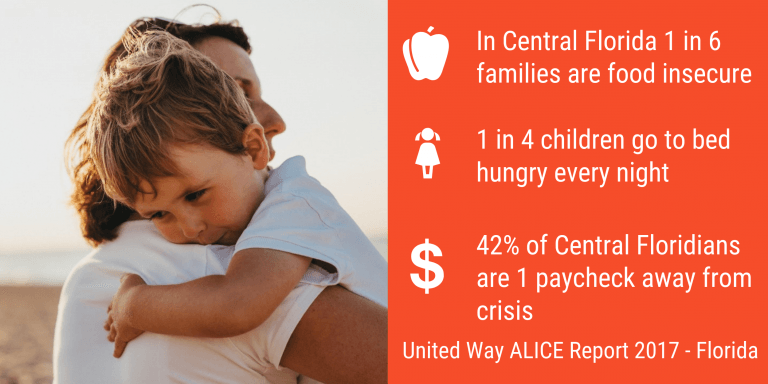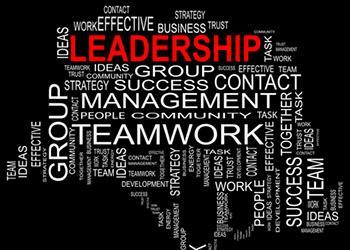Blog Series – An In-Depth Look at Common Segments of Grant Proposals Part 3: Need Statements – Making the Case for Your Organization
Most grant proposals are divided into sections. Each section serves a specific purpose in convincing funders that your organization is a strong match for their funding priorities, a good steward of their dollars, and is meeting a critical need in your community. This blog series will break down the grant proposal and look at each piece individually – its purpose, the message that piece conveys to the funder, and the best practices for sharing that information. We’ll look at:
- Cover Letters – What to Include and What to Leave Out
- Organization History and Background – Developing a Narrative that Appeals to Funders
- Need Statements – Making the Case for Your Organization (this post ?)
- Measurement, Evaluation, and Outcomes – Are Numbers Set in Stone?
- Presentation of Budgets for Grant Applications
- Preparing Your Grant Proposal Packet for Submission

The third section of a grant proposal is the Statement of Need. The purpose of the Statement of Need is to clearly define the problem your organization or program is trying to solve and substantiate the presence of that problem with data.
What are the components of a Statement of Need?
- The Problem – Nonprofit organizations and their programs exist because there are unmet needs in our communities. Your organization’s community may be as small as a neighborhood or as large as the globe. The problem you are trying to solve will exist on the same scale. In two to three sentences, briefly describe the problem your community faces – a workforce that hasn’t recovered from the recession, families in Africa struggling to survive on $3-$5 per day with no money left over for healthcare, a neighborhood trying to rebuild years after the last hurricane while the homes around them continue to sink into the ground on cracked foundations. The first few sentences of your Statement of Need should help the reader visualize the specific challenges of the community you serve.
- Recent Relevant Data – Once you’ve defined the problem, you need to provide confirmation from sources outside your organization that the problem exists and that the issue is significant in nature. When searching for data for a Statement of Need, I recommend combining at least two of these options:
- Data from government sources – Most local, state, and national agencies report data at regular intervals. This makes it easier to compare statistics over time, compare one region to another, and update statistics as new grant applications are developed. Data from government sources is also considered reasonably trustworthy, especially if it is supported by a secondary source.
- Data from universities/colleges in your region – Local universities can be a rich source of data specific to the challenges in your community or region. For example, research done by the College of Business at the University of South Florida St. Petersburg on the economic impact of domestic violence in Pinellas County is ideally suited to grants written for domestic violence programs working to reduce the generational cycle of family violence in most counties in South Florida.
- Data from peer reviewed journals – Research printed in peer reviewed journals has the benefit of validation from other experts within the field. If you don’t have access to an academic research database, OMICS International has an extensive library of over 700 Open Access peer reviewed journals. In addition to peer reviewed journals, you can also look for articles with titles including the words “meta-analysis” or “research survey.” These terms mean a researcher has reviewed multiple research studies to compare the outcomes. For grant writing purposes, these studies are sometimes more helpful. If your Statement of Need includes a statement such as, “in an analysis of 11 research studies about the long-term impacts of crisis counseling for survivors of domestic/sexual violence,” you add substantial weight to your argument while only citing a single source.
- Data from recognized sources – In the eyes of a foundation, data from the Pew Research Center carries more weight than a survey conducted by John Smith from DataSource, Inc. Recognized sources might include major regional nonprofits such as the United Way or Area Agency on Aging, national foundations such Annie E. Casey or W.K. Kellogg, local or national media organizations, etc.
All of the data used in the Statement of Need should be as recent as possible and no more than five years old. In most nonprofit fields, a lot can change in five years. If you cannot find data from within this timeframe to support the need for your organization or program, it may be time to re-evaluate if the need exists.
- Demographics – Provide specific information about the population your organization/program serves. A no-kill animal shelter statement of need should include the number of unhomed pets in the community, the number of feral animals in the community, and the number of surrendered pets dropped off at shelters and the pound each year. A disability advocacy organization would provide statistics for the number of people in the community who have the type of disability served by the organization. Other demographics for the disability advocacy organization may include an age breakdown, income/poverty levels, healthcare needs, or any other population statistics relevant to the community they serve. The Census Bureau is an excellent source for most demographics data related to people in the United States.
- A Connection to Your Mission/Vision – Wrap up the Statement of Need by connecting it back to your organization’s mission/vision. There must be a constant thread throughout your proposal that ties all of the pieces together. If I were writing a Statement of Need for an employment organization, I could wrap up a series of statistics about local unemployment, underemployment, and families who are food insecure and/or at risk of homelessness by stating:
FloridaWorks! employment coaches stand ready to work with local job seekers to secure employment that will meet the financial needs of their household. Each job sets one more family on the path to food security and housing stability.
5. Any Criteria Required by the Funder – Read the application directions carefully. Some funders will ask for specific content in the Statement of Need section. Commonly requested content includes:
- Organizational Capacity/Qualifications – Does your nonprofit organization have the capacity (sufficient staff/facilities/project management experience/collaborative relationships/room to increase programs) and qualifications (certified staff/appropriate licenses and accreditations/network to increase reach) to respond to the problem? If funders include this requirement, it may be in the Statement of Need, in the Proposal, or in a separate section.
- Similar Organizations/Duplication of Services – Funders may ask you to address if there are other organizations/programs in your community that are already addressing this problem. If similar organizations exist, there are two viable reasons for funding an additional organization/program:
- Your organization is unique – If so, tell the funder what sets you apart from others who are trying to solve this problem.
- The demand for services is too high for the available programs to meet – For example, there is currently a shortage of licensed foster homes in most states. The public and nonprofit system is unable to meet the needs of children who are entering and living in foster care. If a nonprofit organization has the capacity and qualifications to develop or grow a foster parent licensing program, it is a necessary program in most regions. This is a valid justification for duplicating current services.
- Specific Demographics – Some funders are very precise about the demographics that need to be included in the Statement of Need. Common requirements include income, ethnicity, gender, and county/region. Watch for these guidelines.
Areas that can be Tricky:

- Statistics and Other Data in Text Blocks – Do you remember struggling with math word problems in school? From middle school through college, I remember a large portion of my classmates bemoaning math problems presented in paragraph format. It can be hard to keep track of which numbers attach to each label. If you are comparing numbers, it gets even harder. When sharing several numbers, make life easier for the grant committee by using infographics, charts, or tables. They present the data in a way that is easier to understand and provide a visual break in your proposal.
- Cite Your Sources Accurately – It is acceptable to summarize information from a report or paraphrase a quote due to space limitations. If you choose to change the wording or order of information from a source, be sure you do not change the results or implication of the data. For example, the infographic above pulls a few statistics from the United Way ALICE 2017 Report for Florida. The graphic lists only three out of more than a dozen statistics cited in the report for a county in Central Florida. The county was selected because it was more populous than most in the region but the data was still similar to the majority of the other counties.
The Statement of Need section verifies that you are seeking an investment for programs or services that are needed in your community. Funders are looking for a clearly identified problem, independent data that supports the existence of the problem and that validates the method you are using to address it, and a connection between the problem and your organization’s mission.











